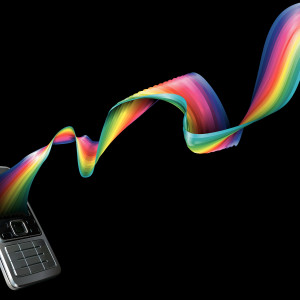The Federal Communications Commission on Thursday voted on several policies governing the future of U.S. airwaves, including rules to let broadcasters sell airwaves to hungry mobile carriers next year, a green light to share wireless microphone spectrum with other wireless devices and a denial to reserve more spectrum exclusively for smaller carriers like T-Mobile.
Commissioners voted on two of those proposals shortly before its agenda-packed Thursday open meeting, denying a request by T-Mobile to increase the 30MHz of spectrum AT&T and Verizon are barred from bidding on during next year’s incentive auction to 40MHz or more.
In a press release from the commission Thursday, the agency said 30 MHz was enough to ensure smaller carriers have a leg up in competing with the nation’s largest carriers during the next year’s auction, when the FCC will buy back spectrum from broadcasters, repackage and sell it to mobile carriers in need of more spectrum to feed bandwidth-heavy smartphone services like video streaming.
RELATED: FCC Releases Airwave Auction Rules Amid AT&T, T-Mobile Fight
A second early vote gave a green light to the commission’s plan to reassign the frequencies used by wireless microphones, like those used by news broadcasters, actors and musicians on stage, to frequencies shared by other cordless devices — a move some groups argue risk causing interference with microphones during live broadcasts and performances.
According to the commission there may be less TV broadcast spectrum — where most wireless microphone frequencies currently reside — after next year’s auction, resulting in the need to share spectrum not reassigned to wireless carriers.
“Together with the rules adopted by the commission today regarding unlicensed use of the 600 MHz band these new rules provide for efficient sharing of these bands to accommodate various wireless microphone users, while continuing to protect the licensed users of each of the bands,” the agency said in a press release Thursday.
In the most contentious vote of the day Republican FCC Commissioners Ajit Pai and Michael O’Rielly dissented on a vote to decide the rules governing the auction itself, in particular over the agency’s plan to place some broadcast TV stations in the “duplex gap” — the airwaves that separate mobile data uploads and downloads. Wireless carriers and broadcasters worry the move could cause interference problems.
RELATED: Ranking Dem on FCC Oversight Committee: ‘House Appropriators Have Really Screwed the FCC’
The Republican commissioners predicted interference concerns and a lack of data released by the commission on the plan will drive down bidding on spectrum, reducing the compensation to broadcasters for the airwaves they’re surrendering in the auction.
Pai said his ideas and those of fellow Republican Commissioner Michael O’Rielly for improving the auction — like offering broadcasters more money to buy more spectrum, thereby reducing spectrum overlap and interference, or moving broadcasters into the uplink portion where they encounter less interference — were largely ignored in the rulemaking process.
The rules were originally slated for a vote during the commission’s July open meeting. The vote was delayed when commissioners including Democrat Mignon Clyburn and members of Congress raised concerns about spectrum sharing provisions released shortly before the meeting.
RELATED: FCC Cuts Off Small Business Subsidies to Companies Like DISH
“What has this process produced? In my view, it has left us with a mess, and with Congress, wireless carriers, broadcasters, unlicensed interests, and others dissatisfied to varying degrees,” Pai said. “I don’t know whether the incentive auction will be successful. But I do know that the FCC is making it substantially more difficult than it needs to be to have a successful auction. And I believe that we are poised to dump serious post-auction difficulties into the laps of future commissions.”
The commission also approved a motion requiring telephone providers to offer customers a battery backup for telephone service in the event of a power outage, as more providers transition their networks from traditional copper lines, which often carry their own power, to fiber.
Providers will have to offer at least eight hours of backup power for the first three years, and increase capacity to 24 thereafter. They’ll also have to notify subscribers when they’re replacing networks and give competitive carriers relying on incumbent networks reasonable rates for service replacement. The FCC also opened comment to hear any danger to 911 emergency response the “tech transition” could cause.
In a later item the FCC approved the unlicensed use of spectrum in TV and 600 MHz bands for wireless smart devices commonly associated with the Internet of Things.
“Unlicensed devices have grown from basic garage door openers and cordless phones to Wi-Fi and Bluetooth technologies to the ‘Internet of Things,’ the FCC said in a statement. “The commission’s Part 15 rules permit unlicensed devices to operate on unused TV channels, the so-called ‘white space’ spectrum. Following the upcoming incentive auction, there may be fewer white space frequencies in the television band for use by such devices.”
Hospitals, health organizations and members of Congress had asked the FCC since last week to delay a vote on the proposal, which allows unlicensed devices to share TV white space, or spectrum unused by licensed services like television broadcasting, originally set aside for wireless medical devices. Both parties worry sharing the spectrum could interfere with medical devices and put patients at risk.
RELATED: Congress Warns FCC of Medical Dangers to Spectrum Sharing
“During this proceeding, hundreds of health care institutions told us that the commission’s protection zones would not be adequate to prevent unlicensed white space devices from causing harmful interference to [Wireless Medical Telemetry Service],” Pai said.
As part of the order the commission adopted a proposal from Pai to automatically increase the size of a protected zone by three times when a WMTS facility determines the default size is not large enough to safeguard patient devices from interference.

